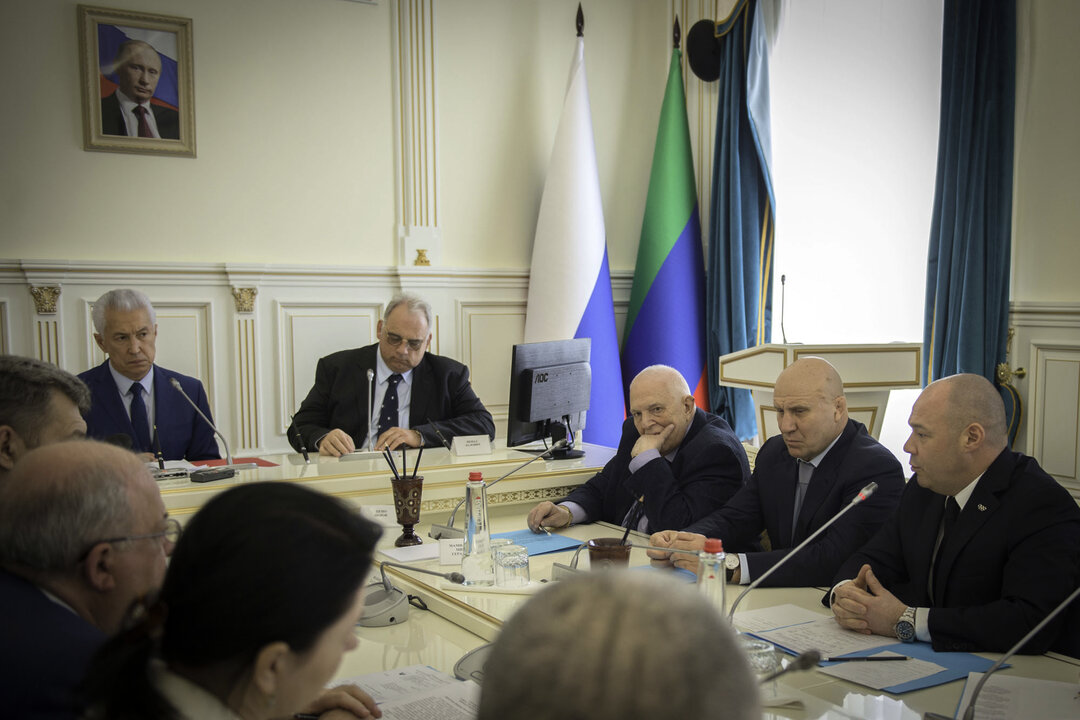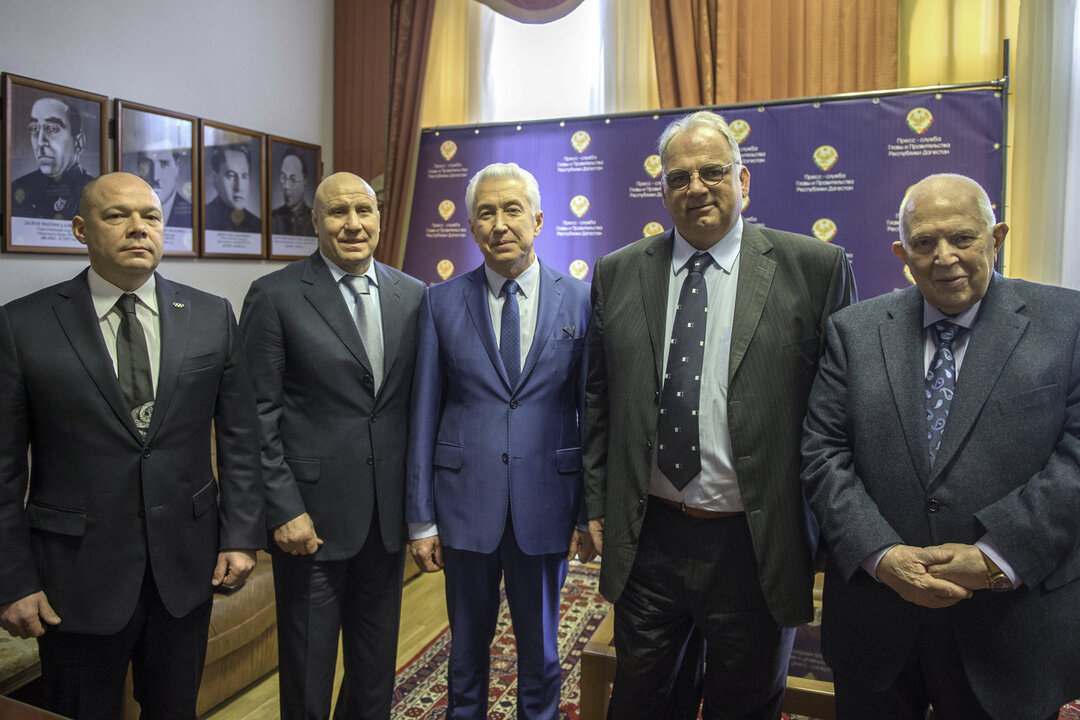NEWARK, United States (June 14) -- United States determined its Freestyle team in nine weight classes for the World Championships after the Final X which was held Saturday in Newark, New Jersey.
One spot -- 61kg -- will be determined on a later date as Vitali ARUJAU (USA) was allowed a delay in his playoff against Jaxen FORREST (USA) due to an injury.
Despite the 61kg playoff not scheduled for Saturday, there was no lack of surprises at the Final X, a tournament designated to select the final 10 wrestlers for the U.S. team.

The biggest surprised came at 70kg as high school sensation Peter DUKE defeated former world silver medalist John DIAKOMIHALIS in a best-of-three series and make his first senior World Championships team.
The win for Duke came in dramatic fashion as he pinned Diakomihalis the third and final bout of the series. Diakomihalis opened with a big 10-0 technical superiority win over Duke in the first bout. However, Duke bounced back with a big 17-10 win in the second bout. Diakomihalis led 9-2 but Duke hit a pair of four-point moves, followed by turns in par terre to win and force the third bout.
In the third bout, Diakomihalis and Duke were in a scramble and the former tried a split-leg defense but was pushed on his back on the mat and Duke kept him there for the fall.
"That first match, [I] didn't wrestle my best," Duke said. "It's a feel match. Didn't doubt myself once."
Duke later revealed that he saw an interview in which Diakomihalis said he would "try to mangle" Duke.
"I took that personal," Duke said. "I'm not going to let that slide. He's a good mentor to me, but I work my butt too hard to be mangled."
Apart from Diakomihalis, Kyle DAKE was fell short in his bid to make the team at 86kg, a big jump from 74kg, in which he won bronze medal at the Paris Olympics.
Read More: Maroulis, Baldes make U.S. World Championships team
Dake fell to Zahid VALENCIA who won two straight matches to make the team. After winning his first bout 5-3, Valencia scored a takedown and leg-lace turn for a 4-0 lead in the first period, and went on to win 4-1. Valencia is a bronze medalist from 2023 World Championships at 92kg.
Paris Olympic silver medalist Spencer LEE made his first-ever World Championships team two-match sweep over world U20 champion Luke LILLEDAHL at 57kg. Lee won the second match 6-0, scoring all of his points in the first period with a takedown, a leg lace and an exposure from the feet. Lee won the first match 7-2, with a key takedown and two gut wrenches in the first period.
At 74kg, age David CARR defeated Mitchell MESSENBRINK in two straight matches. Carr won the first bout 4-3, scoring two takedowns in the second period. He completed the series win with another comeback. Trailing 4-2 in the second period, Carr scored a clutch takedown to tie the match at 4-4 to win by criteria.
Former world U23 champion Wyatt HENDRICKSON the 125kg series in two straight matches over Trent HILLGER. After a 10-0 technical superiority win in the fist bout, Hendrickson was tested in the second but he eventually won 20-14 to wrap up the series over Hillger. Hendrickson made global headlines in March when he won an NCAA title beating 2020 Olympic champion Gable STEVESON in the final.
Trent HIDLAY needed just two bouts at 92kg to defeat Joshua BARR and earn a spot on the team. Hidlay won the first bout 6-1 but the second win proved much difficult to come. All five points were stepout points with Hidlay winning 3-2.
At 65kg, Real WOODS denied Joseph MCKENNA a spot on the world team after posting two straight wins. Both matches had a key four-point move by Woods that made the difference. In the second match, Woods opened the match with a four-pointer, which held up when the match ended 4-4, giving Woods criteria. McKenna challenged, seeking a point on a singlet pull, which was denied, making in 5-4.
Levi HAINES swept his 79kg series in two straight over Evan WICK. In the second match, Haines scored a 6-1 win, with a key takedown and an exposure in the second period for the margin of victory. In the first match, Haines scored an impressive 10-0 first-period technical fall.
Past world and Olympic champion Kyle SNYDER made his 11th straight world/Olympic team for the U.S. after he defeated Hayden ZILLMER. In the deciding second match, Snyder broke a 2-2 tie with two takedowns and a turn in the second period for an 8-2 win.
The 61kg playoff to decide the winner between Arujau and Forrest will be held Monday, July 14 at the Fargodome in Fargo.
RESULTS (Best of three)
57kg
Spencer LEE df. Luke LILLEDAHL, 2-0
Bout 1: Lee df. Lilledahl, 7-2
Bout 2: Lee df. Lilledahl, 6-0
65kg
Real WOODS df. Joseph MCKENNA, 2-0
Bout 1: Woods df. McKenna, 7-3
Bout 2: Woods df. McKenna, 5-4
70kg
Peter DUKE df. John DIAKOMIHALIS, 2-1
Bout 1: Diakomihalis df. Duke, 10-0
Bout 2: Duke df. Diakomihalis, 17-10
Bout 3: Duke df. Diakomihalis, via fall
74kg
David CARR df. Mitchell MESENBRINK, 2-0
Bout 1: Carr df. Mesenbrink, 4-3
Bout 2: Carr df. Mesenbrink, 4-4
79kg
Levi HAINES df. Evan WICK, 2-0
Bout 1: Haines df. Wick, 10-0
Bout 2: Haines df. Wick, 6-1
86kg
Zahid VALENCIA df. Kyle DAKE, 2-0
Bout 1: Valencia df. Dake, 5-3
Bout 2: Valencia df. Dake, 4-1
92kg
Trent HIDLAY df. Joshua BARR, 2-0
Bout 1: Hidlay df. Barr, 6-1
Bout 2: Hidlay df. Barr, 3-2
97kg
Kyle SNYDER df. Hayden ZILLMER, 2-0
Bout 1: Snyder df. Zillmer, 8-0
Bout 2: Snyder df. Zillmer, 8-2
125kg
Wyatt HENDRICKSON df. Trent HILLGER, 2-0
Bout 1: Hendrickson df. Hillger, 10-0
Bout 2: Hendrickson df. Hillger, 20-14






Share your thoughts.
Comments